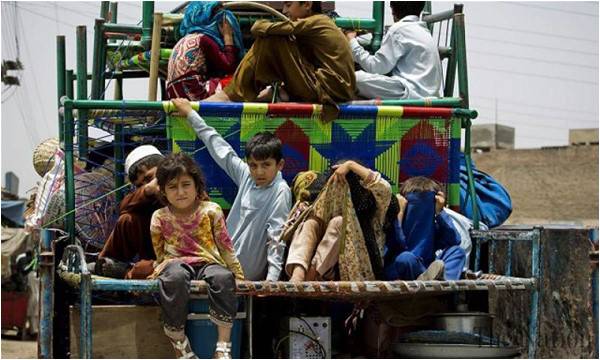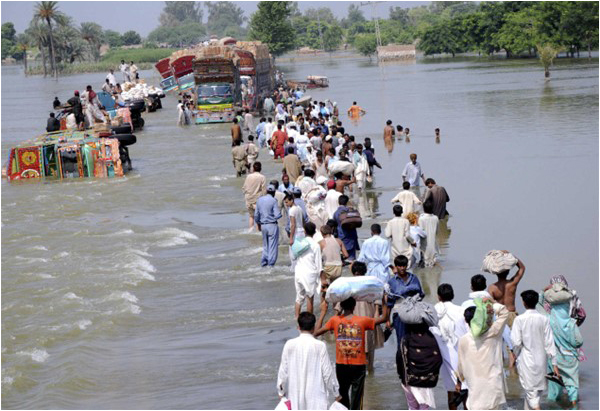
While we have not had a census since 1998, there have been surveys in Pakistan that have informed us about fertility trends at the provincial level and even at the district level in two provinces. They have enabled us to project how much the population has grown each year in each area. A key element that has been missing, however, from our analyses is migration trends. Internal migration is huge in Pakistan but we have no record of its intensity, how many have moved in the last 19 years, from where to where, etc. The 2017 Census will be critical in filling this gap in our knowledge and in identifying the changes this movement has brought about in the distribution of Pakistan’s population.
The census will reveal the placement and distribution of our population both by geographic location and by features such as age and gender. It is safe to say that, since 1998, we are older on average, more educated, and definitely more urbanized. Regarding the size of our major cities, we will finally be able to move from guesstimates to actual estimates, give or take some margin of error of counting. From a policy perspective this information will hopefully help city planners to plan better for the needs of growing cities. At the same time, the data is likely to give a push to efforts to enhance economic opportunities in rural communities to curb the rapid ingress of people into cities that do not have the infrastructure and wherewithal to absorb the increasing influx of people.

As far as our growth rates go, we know that we have definitely added at least 60 million more people to Pakistan since 1998, when we were 132 million. The current estimate of about 196 million people means we have added on almost 50% of the population of 1998. In fact, we expect a slightly lower intercensal growth rate of about 2.14% rather than 2.6% in the censal period of 1981-98. This is because total fertility rates have declined between 1998 and 2017, though unfortunately not as much as they could have, given the high levels of unwanted fertility.
The importance of the population growth rate cannot be underestimated. We have a high base to start with, and the pace of decline in fertility we saw in the 1990s was not sustained in the following decade as anticipated; it has, in fact, stalled since then. The current population growth rate of just under 2% is clearly unsustainable. Pakistan’s resources cannot be stretched to keep up with this population increase.
There are three dominant trends in our population. First of all, there is rapid growth in numbers. Secondly, there is migration which is causing major shifts in the ethnic and regional distribution of people. Thirdly, there are changes in the age structure—many more Pakistanis are in the working age population (15-64 years) compared to a decade ago. Specifically, there were 70 million people in the productive age group in 1998, compared to an estimate of around 121 million today, whose gainful employment can give a much-needed boost to our economy. But more importantly, fertility levels must keep falling in order to lower the dependent (under-15) population. The present youth bulge in our population holds the potential of a demographic dividend—a period of accelerated economic growth such as was seen by the Asian Tigers—but this can only be harnessed if there are fewer dependents relative to the productive population.
In 1998, 49% of the population aged 4 years and above had ever attended any educational institution, while this percentage rose to 61% in 2014-15. However this number could have been much higher had birth rates been lower.
While it was put off for too long, the fact that the census is finally taking place is good news. It cannot be denied that multiple and complex political issues underlie a full count of the population in Pakistan, which raise concerns about security, credibility, divisiveness, political reservations, etc. Yet it is equally true that none of those problems have gone away. In fact, by not conducting the census and delaying it, they only attained more foreboding proportions. In this sense, conducting a census is like holding elections—there can be no excuse for avoiding it. Just as the election process is itself important in the advancement of democracy and democratic rights, a census is essential to make sure that all residents of Pakistan count, regardless of religion, sex, region, etc., and also to demonstrate to the citizenry that this is so. It is a major step towards claiming citizen rights to the most basic of services like schools, hospitals, roads, and water supply, and to voting rights. Thus, while the 2017 Census may not be remembered or held up as our most “ideal” census given the conditions under which it is being held, it will be a remarkable achievement and a necessary step forward for Pakistan. Many other nations have faced similar issues in conducting a census and have overcome them. Notwithstanding the effort and financial outlay entailed, Pakistan must, and indeed deserves, to take the same bold but necessary step.
The results of the census should help us better manage our population, make balanced use of our resources, improve planning, and improve our capacity to ensure people’s basic human rights. The census will likely also bring fresh attention to the great need for couples in Pakistan to act on their desire to space and limit births for the future wellbeing of their children. There will be a huge opportunity for the government to launch, along with the private sector, a serious and planned effort to improve health communications and service delivery, and ensure universal access to family planning services across the country.
The writer is an Master’s in Public Health from the UK and works as the associate and director of programs for the Population Council in Pakistan
The census will reveal the placement and distribution of our population both by geographic location and by features such as age and gender. It is safe to say that, since 1998, we are older on average, more educated, and definitely more urbanized. Regarding the size of our major cities, we will finally be able to move from guesstimates to actual estimates, give or take some margin of error of counting. From a policy perspective this information will hopefully help city planners to plan better for the needs of growing cities. At the same time, the data is likely to give a push to efforts to enhance economic opportunities in rural communities to curb the rapid ingress of people into cities that do not have the infrastructure and wherewithal to absorb the increasing influx of people.

As far as our growth rates go, we know that we have definitely added at least 60 million more people to Pakistan since 1998, when we were 132 million. The current estimate of about 196 million people means we have added on almost 50% of the population of 1998. In fact, we expect a slightly lower intercensal growth rate of about 2.14% rather than 2.6% in the censal period of 1981-98. This is because total fertility rates have declined between 1998 and 2017, though unfortunately not as much as they could have, given the high levels of unwanted fertility.
The importance of the population growth rate cannot be underestimated. We have a high base to start with, and the pace of decline in fertility we saw in the 1990s was not sustained in the following decade as anticipated; it has, in fact, stalled since then. The current population growth rate of just under 2% is clearly unsustainable. Pakistan’s resources cannot be stretched to keep up with this population increase.
There are three dominant trends in our population. First of all, there is rapid growth in numbers. Secondly, there is migration which is causing major shifts in the ethnic and regional distribution of people. Thirdly, there are changes in the age structure—many more Pakistanis are in the working age population (15-64 years) compared to a decade ago. Specifically, there were 70 million people in the productive age group in 1998, compared to an estimate of around 121 million today, whose gainful employment can give a much-needed boost to our economy. But more importantly, fertility levels must keep falling in order to lower the dependent (under-15) population. The present youth bulge in our population holds the potential of a demographic dividend—a period of accelerated economic growth such as was seen by the Asian Tigers—but this can only be harnessed if there are fewer dependents relative to the productive population.
There are many more working-age Pakistanis today (15-64 years) compared to a decade ago. There were 70m people in the productive age group in 1998, compared to an estimate of around 121m today
In 1998, 49% of the population aged 4 years and above had ever attended any educational institution, while this percentage rose to 61% in 2014-15. However this number could have been much higher had birth rates been lower.
While it was put off for too long, the fact that the census is finally taking place is good news. It cannot be denied that multiple and complex political issues underlie a full count of the population in Pakistan, which raise concerns about security, credibility, divisiveness, political reservations, etc. Yet it is equally true that none of those problems have gone away. In fact, by not conducting the census and delaying it, they only attained more foreboding proportions. In this sense, conducting a census is like holding elections—there can be no excuse for avoiding it. Just as the election process is itself important in the advancement of democracy and democratic rights, a census is essential to make sure that all residents of Pakistan count, regardless of religion, sex, region, etc., and also to demonstrate to the citizenry that this is so. It is a major step towards claiming citizen rights to the most basic of services like schools, hospitals, roads, and water supply, and to voting rights. Thus, while the 2017 Census may not be remembered or held up as our most “ideal” census given the conditions under which it is being held, it will be a remarkable achievement and a necessary step forward for Pakistan. Many other nations have faced similar issues in conducting a census and have overcome them. Notwithstanding the effort and financial outlay entailed, Pakistan must, and indeed deserves, to take the same bold but necessary step.
The results of the census should help us better manage our population, make balanced use of our resources, improve planning, and improve our capacity to ensure people’s basic human rights. The census will likely also bring fresh attention to the great need for couples in Pakistan to act on their desire to space and limit births for the future wellbeing of their children. There will be a huge opportunity for the government to launch, along with the private sector, a serious and planned effort to improve health communications and service delivery, and ensure universal access to family planning services across the country.
The writer is an Master’s in Public Health from the UK and works as the associate and director of programs for the Population Council in Pakistan

